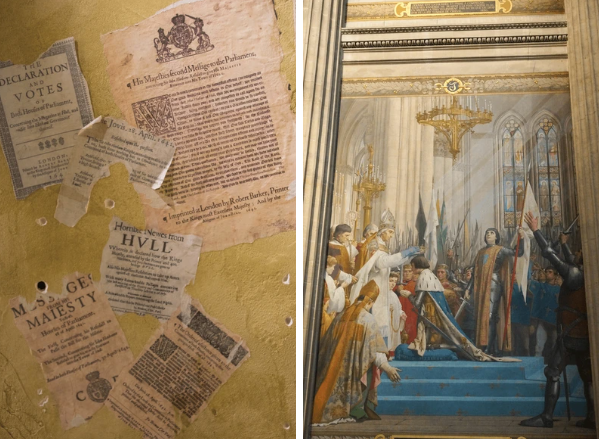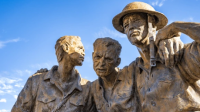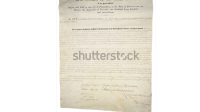Introduction: A Turning Point in British History
The execution of King Charles I on January 30, 1649, was a momentous event in British history, marking the first time that a reigning monarch was publicly tried and executed by his own people. This dramatic event was the culmination of years of political turmoil, civil war, and ideological conflict between the monarchy and Parliament. The execution of Charles I not only brought an end to his reign but also symbolized the end of the notion of absolute monarchy in England, paving the way for the rise of constitutional government.
The trial and execution of Charles I were the result of deep-seated tensions between the king and Parliament, rooted in disagreements over the extent of royal authority, religious policies, and financial governance. The king’s execution shocked the world and set a precedent for the limitations of monarchical power, influencing the development of modern democracy in Britain and beyond.
Read Also : Start of the Wars of the Roses (1455): A Struggle for the English Throne
The Road to Regicide: Political and Religious Conflicts
The execution of Charles I did not occur in isolation; it was the result of a series of conflicts and disputes that had been brewing for years. These tensions were deeply intertwined with issues of political power, religion, and governance, ultimately leading to the downfall of the king.
The Divine Right of Kings vs. Parliamentary Authority: The Core Conflict Leading to the Execution of Charles I
One of the central issues that led to the execution of Charles I was the conflict between the king’s belief in the divine right of kings and Parliament’s assertion of its own authority. Charles I was a firm believer in the divine right of kings, the idea that monarchs were appointed by God and were accountable only to Him. This belief led Charles to govern without Parliament for extended periods, particularly during his Personal Rule from 1629 to 1640, when he ruled without calling Parliament.
However, many members of Parliament, particularly the Puritans, who sought greater influence in government and stricter religious reforms, opposed the king’s autocratic rule. They believed that the king should be subject to the laws of the land and accountable to Parliament. The tension between these two conflicting views of governance became increasingly pronounced, leading to a series of confrontations between Charles and Parliament.
This tension was further exacerbated by the king’s attempts to raise funds without parliamentary consent, through controversial measures such as ship money and forced loans. These actions were seen by many as an overreach of royal power and a violation of the rights of the English people. The resulting conflict over taxation and royal prerogative set the stage for a broader struggle over the very nature of the English constitution, ultimately leading to the trial and execution of Charles I.
Religious Policies and the Rise of Puritan Opposition: A Catalyst for the Downfall of Charles I
Religion played a significant role in the disputes that led to the king’s downfall and eventual execution. Charles I’s religious policies, particularly his attempts to impose Anglican practices on the Scottish Presbyterian Church, sparked widespread unrest. His marriage to a Catholic princess, Henrietta Maria of France, also fueled fears among the Protestant population that Charles harbored pro-Catholic sympathies.
The king’s religious policies were deeply unpopular with the Puritans, a group of English Protestants who sought to “purify” the Church of England of its Catholic elements. The Puritans, who were well-represented in Parliament, viewed Charles’s religious policies as an attempt to undermine Protestantism and impose Catholicism on England. Their opposition to the king’s religious reforms further deepened the rift between the monarchy and Parliament.
The introduction of the Book of Common Prayer in Scotland in 1637 was a particularly contentious issue, leading to the Bishops’ Wars between Scotland and England. These conflicts drained the royal coffers and forced Charles to call Parliament in 1640, after years of ruling without it. This “Long Parliament” would become the main antagonist to Charles’s rule, seeking to curtail his powers and address grievances over both religious and secular matters, and setting the stage for the eventual execution of Charles I.
The Financial Strain and Taxation Without Consent: Financial Policies That Led to the Execution of Charles I
Another major source of conflict between Charles I and Parliament was the issue of royal finances. Charles’s attempts to raise money without parliamentary consent, through measures such as ship money and forced loans, were deeply unpopular and seen as a violation of traditional rights. The king’s financial policies alienated many of his subjects, who viewed them as an overreach of royal power and an attack on their liberties.
Parliament, particularly the House of Commons, resisted these measures, arguing that taxation without consent was illegal. The king’s insistence on raising funds without parliamentary approval became a central issue in the conflict between the monarchy and Parliament, fueling the tensions that would eventually lead to civil war and the execution of Charles I.
The financial strain was further exacerbated by Charles’s military campaigns, including the failed wars in Scotland and Ireland. These costly endeavors drained the treasury and forced the king to rely even more heavily on unpopular forms of taxation. The widespread resentment over these financial burdens helped to galvanize opposition to the king and contributed to the growing movement for parliamentary reform, ultimately culminating in the king’s trial and execution.
The Role of Personalities and Court Intrigues: The Influence of Key Figures on the Execution of Charles I
The personal relationships and court intrigues of Charles I’s reign also played a significant role in the events leading up to his execution. The influence of unpopular figures such as George Villiers, Duke of Buckingham, and Archbishop William Laud, who were closely associated with the king, exacerbated the tensions between the crown and its subjects.
The king’s reliance on a small circle of advisers, often to the exclusion of broader counsel, contributed to the growing alienation of many in the nobility and gentry. These personal dynamics, combined with the broader political and religious conflicts, created an atmosphere of mistrust and resentment that ultimately led to the breakdown of royal authority and the execution of Charles I.
The assassination of Buckingham in 1628 removed one of the most divisive figures from the king’s inner circle, but the damage had already been done. Laud’s aggressive enforcement of Anglican conformity further alienated the Puritan faction within Parliament, and his policies were widely seen as an attack on Protestant liberties. The court’s perceived favoritism and corruption added fuel to the fire, leading many to question the king’s judgment and fitness to rule, eventually resulting in his trial and execution.
The Breakdown of Communication and the Collapse of Trust: How Miscommunication Led to the Execution of Charles I
The final and perhaps most critical factor in the road to regicide was the complete breakdown of communication and trust between Charles I and Parliament. Over time, both sides became increasingly entrenched in their positions, with neither willing to compromise or seek a peaceful resolution. The king’s repeated attempts to assert his authority through force, such as his failed attempt to arrest the five members of Parliament in 1642, only deepened the crisis.
As mistrust grew, the possibility of reconciliation diminished. By the time the English Civil War broke out, the relationship between the king and Parliament had deteriorated to the point where a peaceful settlement was no longer feasible. The war would ultimately decide the fate of the monarchy, but the seeds of conflict had been sown long before the first shots were fired, leading inevitably to the trial and execution of Charles I.
The collapse of trust between the king and his subjects was symbolized by the events of the Grand Remonstrance in 1641, a document that outlined Parliament’s grievances against Charles and called for sweeping reforms. The king’s refusal to accept these demands, coupled with his attempt to arrest the five members, convinced many that he could not be trusted to govern in the best interests of the nation. This breakdown in trust would prove to be the final nail in the coffin for Charles’s reign, leading to his eventual execution.
The English Civil War: The Collapse of Royal Power
The growing tensions between Charles I and Parliament eventually erupted into open conflict, leading to the English Civil War, a series of armed conflicts and political machinations that would ultimately decide the fate of the monarchy and result in the execution of Charles I.
The Outbreak of War: The Initial Clashes That Led to the Execution of Charles I
The English Civil War began in 1642, after years of escalating tensions between the king and Parliament. The immediate cause of the war was Charles’s attempt to arrest five members of Parliament who were his leading critics. This action was seen as a blatant violation of parliamentary privilege and led to widespread outrage. When Charles left London to raise an army, the country was plunged into civil war.
The war was fought between the Royalists, who supported the king, and the Parliamentarians, also known as Roundheads, who sought to limit the king’s power and enhance the authority of Parliament. The conflict was marked by a series of battles, sieges, and political maneuverings, with both sides vying for control of the country, ultimately leading to the trial and execution of Charles I.
The early stages of the war saw both sides achieve varying degrees of success, with neither able to secure a decisive victory. The Battle of Edgehill in 1642 was the first major engagement of the war and ended inconclusively, with both Royalists and Parliamentarians claiming victory. This battle set the tone for a conflict that would drag on for years, causing immense suffering and destruction across the country, and eventually leading to the execution of Charles I.
The Key Battles and Turning Points: Military Events That Paved the Way for the Execution of Charles I
Several key battles and turning points defined the course of the English Civil War and paved the way for the execution of Charles I. The Battle of Edgehill in 1642, the first major battle of the war, ended inconclusively, setting the stage for a prolonged and bloody conflict. The Battle of Marston Moor in 1644 was a decisive victory for the Parliamentarians and marked the beginning of the decline of Royalist power.
The Battle of Naseby in 1645 was perhaps the most significant turning point in the war. The Parliamentarian New Model Army, led by Sir Thomas Fairfax and Oliver Cromwell, inflicted a crushing defeat on the Royalist forces, effectively destroying the king’s ability to wage war. This victory marked the beginning of the end for Charles I’s reign and set the stage for his eventual trial and execution.
Another crucial battle was the Battle of Langport in 1645, where Cromwell’s forces once again triumphed over the Royalists, further weakening their position. The defeat at Langport allowed Parliamentarian forces to capture key Royalist strongholds, including Bristol, a major port city. These victories shifted the balance of power decisively in favor of Parliament and left the king with few options but to negotiate or face total defeat, ultimately leading to his execution.
The Role of Oliver Cromwell and the New Model Army: Key Players in the Execution of Charles I
Oliver Cromwell, a key figure in the Parliamentarian cause, played a crucial role in the defeat of the Royalists and the eventual execution of Charles I. Cromwell’s leadership of the New Model Army, a disciplined and effective fighting force, was instrumental in securing Parliament’s victory. Cromwell’s military prowess, combined with his political acumen, made him one of the most influential figures of the war.
The New Model Army was not just a military force but also a political entity with its own agenda. The army’s leaders, including Cromwell, were deeply committed to the idea of limiting royal power and establishing a more equitable system of governance. The army’s support for the trial and execution of Charles I was a key factor in the eventual decision to bring the king to justice.
Cromwell’s leadership was characterized by his ability to inspire and motivate his troops, as well as his innovative tactics on the battlefield. His use of cavalry in rapid, decisive strikes was particularly effective, allowing the New Model Army to outmaneuver and outfight the Royalist forces on multiple occasions. Cromwell’s reputation as a leader of men and a defender of Parliamentarian principles would continue to grow, culminating in his role as Lord Protector of England after the war and after the execution of Charles I.
The Fall of Charles I: The Events Leading Directly to His Execution
The English Civil War ultimately led to the defeat of the Royalist forces and the capture of Charles I. After several years of fighting, the Parliamentarian army, led by Oliver Cromwell, emerged victorious. In 1646, Charles was captured and handed over to Parliament. However, even in captivity, the king continued to negotiate with various factions, hoping to regain his throne.
Charles’s refusal to accept the terms offered by Parliament, coupled with his secret negotiations with the Scots and other Royalist sympathizers, led to the outbreak of the Second Civil War in 1648. This brief but bloody conflict ended in a decisive Parliamentarian victory, with Cromwell’s forces crushing the Royalists at the Battle of Preston. With the Royalist cause in tatters, the decision was made to put the king on trial, leading directly to his execution.
The decision to try the king for treason was unprecedented and controversial. Many in Parliament were reluctant to take such a drastic step, fearing the consequences of executing a monarch. However, the New Model Army, under Cromwell’s leadership, was determined to hold Charles accountable for the bloodshed of the civil wars and for his attempts to undermine the authority of Parliament. The trial of Charles I was a bold assertion of parliamentary sovereignty and a rejection of the divine right of kings, ultimately leading to his execution.
The Trial of Charles I: Legal Proceedings That Led to His Execution
The trial of Charles I was a watershed moment in British history, ultimately leading to the king’s execution. It was an unprecedented event, as never before had a king been tried and condemned by his own subjects. The trial was a highly controversial and politically charged affair, reflecting the deep divisions within English society.
The trial was conducted by a specially convened court, known as the High Court of Justice, which was established by an act of Parliament. The court was composed of 135 commissioners, though only about half of them attended the proceedings. Oliver Cromwell and other leading Parliamentarians were among the commissioners who played a key role in the trial, which culminated in the execution of Charles I.
Throughout the trial, Charles I maintained his belief in the divine right of kings and refused to recognize the legitimacy of the court. He argued that no court had the authority to try a king, as he was answerable only to God. Charles’s refusal to plead or acknowledge the court’s jurisdiction was seen as an act of defiance, but it also underscored the ideological divide between the monarchy and Parliament, leading to his execution.
Despite his arguments, the trial proceeded, and Charles was found guilty of high treason. The sentence was death by beheading, a shocking and unprecedented decision that sent shockwaves throughout Europe. The execution was scheduled to take place just days after the trial concluded, marking the end of an era and the beginning of a new chapter in British history.
The Execution: The End of a Reign and the Birth of a New Order
The execution of Charles I on January 30, 1649, was a dramatic and unprecedented event that marked the end of the English monarchy’s absolute power and the beginning of a new political order.
The Final Moments Before the Execution of Charles I
On the morning of his execution, Charles I was led from St. James’s Palace to Whitehall, where a scaffold had been erected for his execution. The execution took place in front of the Banqueting House at Whitehall Palace, a symbolic location that underscored the gravity of the event and the significance of the king’s execution.
Charles addressed the crowd before his execution, maintaining his innocence and reiterating his belief in the divine right of kings. He expressed his willingness to die as a martyr for the monarchy and warned of the dangers of allowing Parliament to overthrow the king. Despite his pleas, the sentence was carried out, and Charles was beheaded with a single stroke of the axe, marking a significant moment in history.
The execution of Charles I was a shocking event that had a profound impact on England and the wider world. Many people were horrified by the execution, viewing it as a sacrilegious act that violated the natural order. Others saw it as a necessary step to secure the liberties of the people and prevent the tyranny of absolute monarchy, setting a precedent for future governance.
The Immediate Aftermath of the Execution of Charles I
The execution of the king marked the beginning of a period of republican government in England, known as the Commonwealth, which lasted until the Restoration of the monarchy in 1660. The execution also set a precedent for the idea that even a king could be held accountable to the law, a concept that would influence the development of constitutional monarchy and democratic governance in Britain and beyond.
The Commonwealth, led by Oliver Cromwell, represented a radical departure from the traditional monarchy. It was characterized by the abolition of the House of Lords and the establishment of a single-chamber Parliament. Although the Commonwealth was short-lived, it had a lasting impact on the political landscape of Britain and laid the groundwork for the eventual development of a constitutional monarchy, influenced by the execution of Charles I.
The memory of Charles I’s execution also played a significant role in shaping the political discourse of the time. Royalists and other supporters of the monarchy viewed the king’s death as a martyrdom, and his image became a rallying point for those who opposed the republican government. The execution also sparked a broader debate about the nature of sovereignty, the rights of rulers, and the limits of political power, which would continue to influence political thought for generations.
The Political Legacy of the Execution of Charles I
The execution of Charles I had far-reaching consequences for the future of the British monarchy, the nature of governance, and the development of political thought, with a legacy that continues to this day.
The execution fundamentally altered the nature of the British monarchy. It marked the end of the notion of absolute monarchy in England and established the principle that the king was not above the law. The execution also led to the temporary abolition of the monarchy and the establishment of the Commonwealth, a republican government led by Oliver Cromwell.
Although the monarchy was restored in 1660 with the return of Charles II, the son of Charles I, the execution had a lasting impact on the relationship between the monarchy and Parliament. The Restoration settlement placed significant limits on the power of the monarchy and laid the groundwork for the development of a constitutional monarchy, in which the king or queen ruled in partnership with Parliament, influenced by the events leading to the execution of Charles I.
The memory of Charles I’s execution continued to shape the monarchy in the years that followed. Kings and queens who came after him were acutely aware of the limits of their power and the dangers of overstepping their authority. The principle that the monarch was subject to the law became a cornerstone of British governance, influencing the evolution of the British constitution and the relationship between the crown and Parliament, with a lasting impact on British society.
The Influence on Political Thought: How the Execution of Charles I Shaped Modern Governance
The execution of Charles I also had a profound influence on political thought, both in Britain and internationally. The event challenged traditional notions of royal authority and divine right, leading to new ideas about the nature of government, the rights of the people, and the limits of monarchical power, with a legacy that continues to influence modern governance.
The trial and execution of the king were seen by many as a radical assertion of popular sovereignty, the idea that political power derives from the people rather than from divine authority. This concept would later influence the development of democratic and republican thought in Britain, Europe, and the Americas, shaped by the events leading to the execution of Charles I.
Philosophers and political theorists such as John Locke and Algernon Sidney drew inspiration from the events of the English Civil War and the execution of Charles I in their writings on government and the rights of individuals. Locke’s ideas about the social contract and the right of the people to overthrow a tyrannical ruler would later have a profound impact on the development of liberal democracy and the American Revolution, with a lasting impact on political thought.
FAQ About the Execution of Charles I (1649)
What led to the execution of Charles I?
The execution of Charles I was the result of deep-seated conflicts between the monarchy and Parliament, rooted in issues of royal authority, religious policies, and financial governance. The English Civil War, which culminated in the defeat of the Royalists, paved the way for Charles’s trial and execution.
How did Charles I’s religious policies contribute to his execution?
Charles I’s attempts to impose Anglican practices on the Scottish Presbyterian Church and his perceived pro-Catholic sympathies fueled widespread unrest. The Puritans, who were well-represented in Parliament, viewed these policies as an attack on Protestantism, contributing to the growing opposition that ultimately led to the king’s execution.
Why was the trial of Charles I unprecedented?
The trial of Charles I was unprecedented because it was the first time a reigning monarch was tried and condemned by his own subjects. The trial challenged the traditional belief in the divine right of kings and set a precedent for the idea that even a monarch could be held accountable to the law.
What was the impact of the execution of Charles I on the British monarchy?
The execution of Charles I fundamentally altered the nature of the British monarchy, marking the end of absolute monarchy in England. It led to the temporary abolition of the monarchy and the establishment of the Commonwealth, and it laid the groundwork for the development of a constitutional monarchy in which the king or queen ruled in partnership with Parliament.
How did the execution of Charles I influence political thought?
The execution of Charles I had a profound influence on political thought, particularly on the concepts of popular sovereignty and the limits of monarchical power. The event inspired philosophers and political theorists, such as John Locke, and contributed to the development of democratic and republican thought in Britain, Europe, and the Americas.
Conclusion: The Execution of Charles I in Historical Perspective
The execution of Charles I in 1649 was a pivotal moment in British history that marked the end of absolute monarchy and the beginning of a new era of constitutional governance. The trial and execution of the king were unprecedented events that reflected deep political, religious, and ideological conflicts of the time. This watershed event set a lasting precedent that no ruler, not even a monarch, is above the law, influencing the development of modern democratic principles and the evolution of the British constitution. The legacy of Charles I’s execution continues to shape political thought and governance, underscoring the importance of accountability and the rule of law in any government.







1 comment